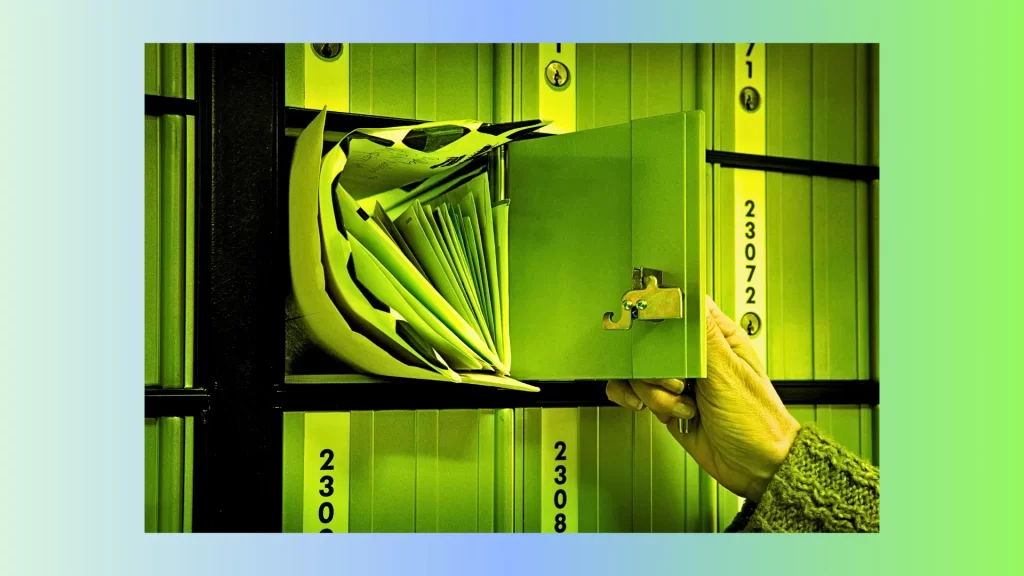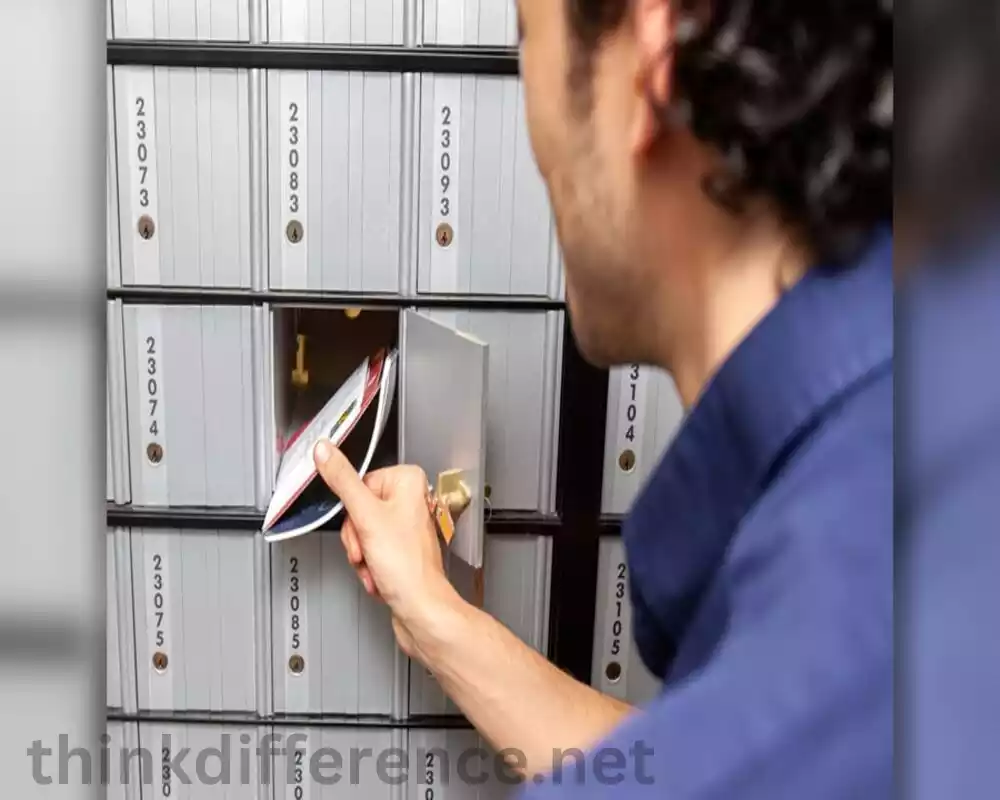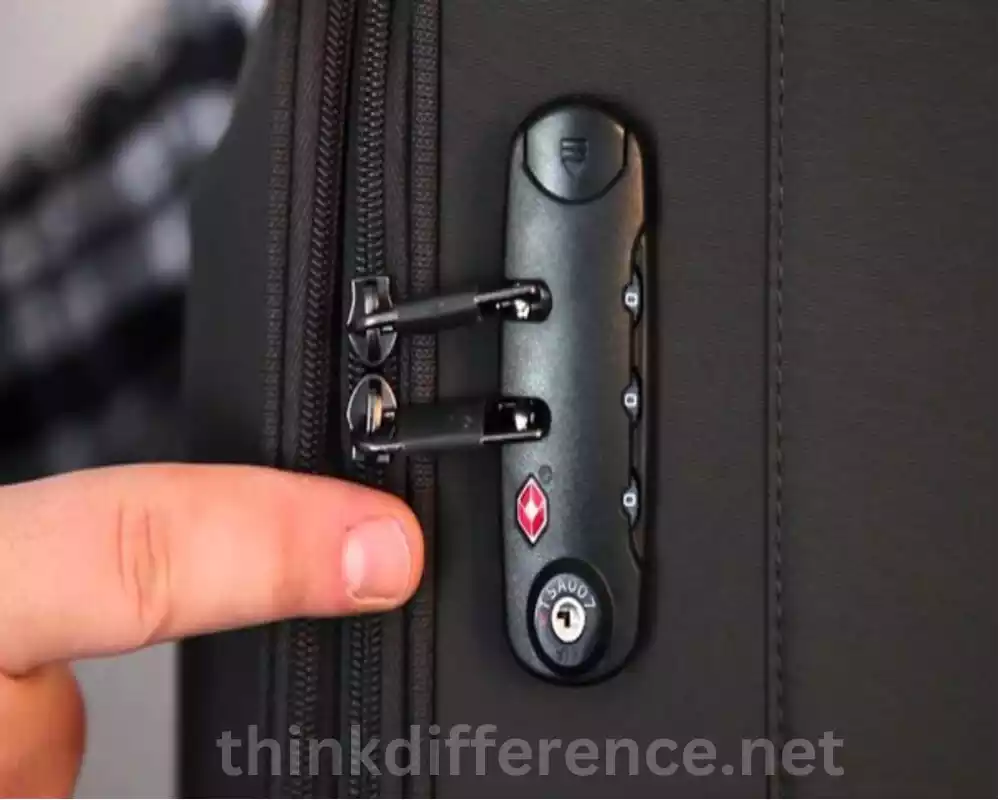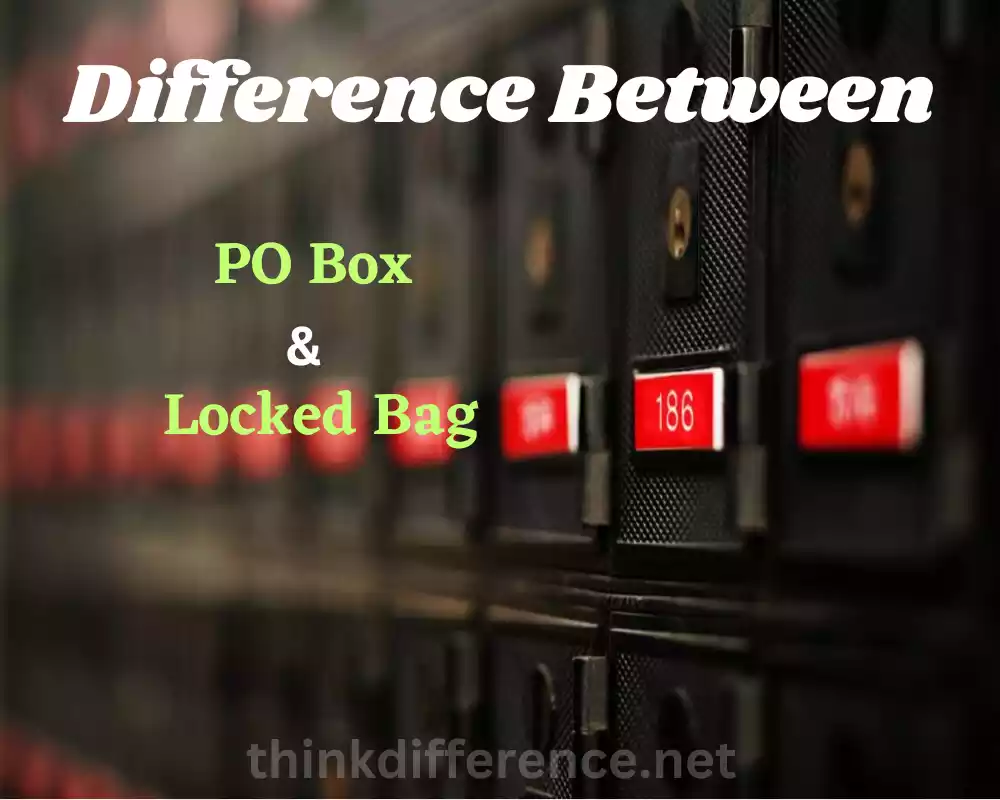Definition of PO Box and Locked Bag
PO Box:
PO Box provided by the Postal Service, provide secure mailboxes that individuals and businesses alike can rent as mailboxes for receiving mail. Each PO box comes equipped with its own number that allows it to replace physical street addresses as a receiving destination for mail delivery. PO Boxes are typically located in post office buildings or at specific mailbox centers and are accessible during the operating hours of the facility.

Locked Bag:
A Locked Bag is a secure and dedicated mailing service provided by postal authorities or certain organizations. It is a sealed bag or container with a lock or seal that is used for receiving and dispatching mail. Unlike a PO Box, which is accessed by the individual recipient, a Locked Bag is primarily used by businesses, government agencies, or specific organizations to receive and send large volumes of mail securely.
Locked Bags are typically assigned a unique number or identifier, and the mail is delivered directly to the designated Locked Bag rather than an individual’s address. They are often located in secure mailrooms or facilities and require authorized personnel to access and retrieve the mail. Locked Bags provide an added level of security and privacy, particularly for sensitive or confidential correspondence.
Importance of understanding the difference between PO Box and Locked Bag
Understanding the difference between PO Box and Locked Bag is important for several reasons:
- Mail Handling Efficiency: Knowing the distinction between a PO Box and a Locked Bag helps individuals and organizations choose the most suitable option for their specific mail handling needs. This ensures that mail is received and processed efficiently, minimizing delays and potential errors.
- Security and Privacy: By understanding these differences, individuals and businesses alike can make informed decisions regarding the level of privacy and security needed for their mail. PO Boxes offer privacy and protection against theft, while Locked Bags provide an additional layer of security and confidentiality, making them ideal for sensitive or confidential documents.
- Accessibility and Convenience: Differentiating between a PO Box and a Locked Bag helps determine which option offers the desired accessibility and convenience. PO Boxes are typically accessible during the operating hours of the post office or mailbox center, while Locked Bags may have more restricted access but provide direct delivery to a secure mailroom.
- Eligibility and Availability: Being aware of the eligibility criteria and availability of PO Boxes and Locked Bags helps individuals and organizations understand which option is accessible to them. Some services may only be made available to certain businesses, organizations or government agencies while others could be accessible by anyone.
- Suitability for Different Purposes: Understanding the differences between a PO Box and a Locked Bag allows individuals and businesses to choose the option that best suits their specific purposes. PO Boxes are often preferred for personal mail or small business needs, while Locked Bags are more commonly utilized by larger organizations, government agencies, or businesses that handle significant mail volumes.
Understanding the difference between a PO Box and a Locked Bag empowers individuals and organizations to make informed decisions about their mail handling requirements, ensuring efficient delivery, security, and privacy.
Understanding PO Box
Individuals and companies requiring mail delivery at convenient and secure alternative street addresses need to understand what a PO Box is in order to effectively use one.

Here is what you must understand about PO Boxes:
1. Definition: A PO Box is a locked compartment or mailbox provided by the postal service or private mailbox services. It is a designated address at a post office or mailbox center where individuals or businesses can receive their mail.
2. Function and Purpose: PO boxes serve primarily as central collection points for receiving mail; renting one as your mailing address provides an affordable alternative to having it come directly to a residence or business address. The post office staff or private mailbox service will place incoming mail into the appropriate box for the customer to collect.
3. Obtaining a PO Box: Businesses or individuals interested in opening a PO box need to complete and return an application at their mailbox or post office. They may need to provide identification and proof of address. The post office or mailbox service will assign a unique box number to the customer, and they will receive a key or combination to access their box.
4. Advantages of Using a PO Box:
- Privacy and Security: PO Boxes offer privacy by keeping personal addresses confidential. They help prevent identity theft and protect against mail theft.
- Professional Appearance: Using a PO Box can give a professional image to a business, as it provides a separate mailing address from a residential location.
- Convenience of Mail Collection: PO Boxes are accessible during the operating hours of the post office or mailbox center, allowing customers to collect their mail at their convenience.
5. Limitations and Considerations:
- Size Limitations: PO Boxes come in different sizes, and larger items or packages may not fit in smaller boxes. Customers should select an appropriate size based on their anticipated mail volume.
- Packages from Certain Carriers: Some shipping carriers may not deliver packages to a PO Box address. In such cases, customers may need to provide an alternative address for package deliveries.
- Limitations on Mail Types: Registered and certified mail may require an actual address instead of just a PO box number.
Understanding how PO Boxes function, their benefits, and limitations allows individuals and businesses to make informed decisions about using them for their mail handling needs.
Understanding Locked Bag
Understanding a Locked Bag is important for organizations, businesses, and government agencies that require a secure and confidential mail handling solution.

Here are some key points to understand about Locked Bags:
1. Definition: A Locked Bag is a dedicated mailing service provided by postal authorities or specific organizations. It involves the use of a sealed bag or container with a lock or seal to receive and dispatch mail.
2. Function and Purpose: The primary function of a Locked Bag is to provide a secure and controlled environment for receiving and sending mail. It is often used by businesses, government agencies, or organizations that handle large volumes of mail or require enhanced security for sensitive or confidential correspondence.
3. Obtaining a Locked Bag: Locked Bags are typically assigned to organizations or businesses based on their specific requirements. The postal authority or organization responsible for the service allocates a unique identifier or number for each Locked Bag.
4. Advantages of Using a Locked Bag:
- Increased Security: Locked Bags offer a higher level of security compared to traditional mail delivery. The sealed bag or container protects the contents from unauthorized access or tampering.
- Direct Delivery to a Secure Location: Locked Bags are delivered directly to a designated secure mailroom or facility, ensuring controlled access and minimizing the risk of loss or theft.
- Suitable for Larger Volumes of Mail: Locked Bags are designed to handle significant mail volumes efficiently, making them ideal for businesses or organizations that receive a substantial amount of correspondence.
5. Limitations and Considerations:
- Availability for Specific Organizations or Businesses: Locked Bags may be restricted to certain organizations or businesses that meet specific criteria. They may not be available for general public use.
- Limited Access to the Public: Unlike PO Boxes that can be accessed by individuals, Locked Bags usually require authorized personnel to retrieve mail from the designated secure location.
- Restricted Services Compared to a PO Box: Locked Bags may have limitations on certain postal services, such as the inability to receive registered or certified mail. Individuals or organizations should consider the services and features available with a Locked Bag before choosing it as their mail handling solution.
Understanding the function, advantages, and limitations of Locked Bags allows organizations and businesses to make informed decisions about using this service to meet their secure mail handling needs.
Differences Between PO Box and Locked Bag
There are several key differences between a PO Box and a Locked Bag. These differences include:
- Security: While both options offer a level of security, Locked Bags generally provide a higher level of security compared to PO Boxes. Locked Bags are sealed and delivered to a secure mailroom or facility, reducing the risk of unauthorized access or tampering. PO Boxes, on the other hand, are located within a post office or mailbox center and may be more susceptible to theft or unauthorized access.
- Accessibility: PO Boxes are typically accessible during the operating hours of the post office or mailbox center. Individuals can visit their designated location to collect their mail. In contrast, Locked Bags often require authorized personnel to access and retrieve the mail from a secure location. They may have limited public access and may not be as easily accessible as PO Boxes.
- Eligibility: PO Boxes are generally available to the public. Individuals, businesses, and organizations can rent a PO Box as long as they meet the requirements and pay the necessary fees. In contrast, Locked Bags are often reserved for specific organizations, businesses, or government agencies that handle significant mail volumes or have specific security needs. They may have eligibility criteria that restrict access to certain entities.
- Mail Handling: With a PO Box, mail is placed directly into the assigned box by the postal service or mailbox center staff. Individuals can collect their mail at their convenience during the operating hours. Locked Bags, on the other hand, involve the delivery of a sealed bag or container to a secure mailroom or facility. Authorized personnel retrieve the mail from the Locked Bag and distribute it internally within the organization or business.
- Services and Limitations: PO Boxes generally offer a wide range of postal services, including receiving various types of mail (e.g., letters, packages) and options for mail forwarding or holding. Certain services, such as receiving registered or certified mail, may have limitations when using a PO Box. Locked Bags may have more restricted services compared to PO Boxes and may not support all types of mail services. They are primarily designed for organizations with specific mail handling needs.
Understanding these differences helps individuals and organizations choose the most appropriate option based on their specific requirements for security, accessibility, eligibility, mail handling, and available services.
When to Use a PO Box or Locked Bag
The decision to use a PO Box or a Locked Bag depends on individual or organizational needs and preferences.
Here are some scenarios to consider when deciding between a PO Box and a Locked Bag:
1. Personal Use:
- PO Box: A PO Box is suitable for individuals who want a secure and private mailbox separate from their residential address. It offers convenience and privacy for personal mail and online purchases.
- Locked Bag: Locked Bags are typically not available for personal use and are more geared towards organizations or businesses. Therefore, for personal use, a PO Box is the appropriate choice.
2. Small Businesses:
- PO Box: For small businesses operating from a residential address, a PO Box can provide a professional mailing address, separate from the home address. It gives the business a more professional appearance and helps maintain privacy.
- Locked Bag: Small businesses may not require a Locked Bag unless they handle a substantial volume of mail or have specific security needs. In most cases, a PO Box is more suitable and cost-effective for small businesses.
3. Large Organizations:
- PO Box: Large organizations may use a PO Box for specific purposes, such as receiving general correspondence or non-sensitive mail. PO Boxes are convenient for mail collection by multiple employees within the organization.
- Locked Bag: Locked Bags are well-suited for large organizations that handle significant mail volumes, have strict security requirements, or deal with sensitive and confidential information. The sealed bag and controlled access provide an added layer of security.
4. Specific Industry Requirements:
- PO Box: Some industries or organizations may have regulations or requirements that mandate the use of a physical street address instead of a PO Box. In such cases, a PO Box may not be suitable.
- Locked Bag: Certain industries, such as healthcare or financial institutions, may require enhanced security measures for mail handling. A Locked Bag can provide the necessary level of security and confidentiality.
It’s important to assess individual or organizational needs, security requirements, volume of mail, and industry-specific regulations to determine whether a PO Box or a Locked Bag is the most appropriate choice. In many cases, a PO Box offers convenience and privacy, while a Locked Bag is reserved for larger organizations with specific security needs.
Summary
Both PO Box and Locked Bag provide valuable services for individuals and businesses alike. They offer enhanced privacy, security, and convenience when compared to traditional street addresses. Choosing the right option depends on specific requirements and preferences, but regardless of which one you select, having an alternative mailing address can prove to be beneficial in various situations.



